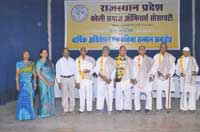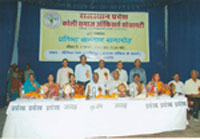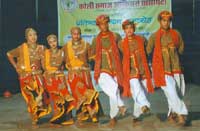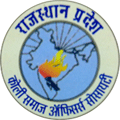
About Koli Samaj Officers Society!
Koli Samaj consisted of the so exploited farmers-artisans in Rajasthan. The Koli Samaj is a society that cultivates strong ethical and moral values as well as advocates peaceful and productive human living.…

Group of Koli Samaj Officers Society
The Rajasthan Pradesh Koli Samaj Officers Society was estaiblished on 20th Aug 1995 with the leadership of lt. Shree Roshan Lal ji..…

Social activities of our Samaj
Koli Samaj intellectuals and followers successfully achieved the goals of bringing equality of all sections of society and helped achieve the independence of India from British rule.…


|
History of Koli Samaj
KORI/ KOLI claim to have originated from a Brahman king. The name Kori has been derived from the Kol caste, and they are assumed to be an offshoot of the Koli. Weaving has been the traditional occupation of the society, But the society is also involved in agriculture. Besides, some are also engaged in skilled and unskilled labour and are employed in different government and private services. In Utter Pradesh the Society is divided into twelve endogamous subgroups, namely Aharwar, Banbata, Dhiman, Haldiha, Jaiswar, Kabir Panthi, Kaithia, Kamalvanshi, Kamariha, Mahaure, Sakyawar and Shankhwar and these subgroups are of equivalent status in relation to one another. Each of these subgroups is divided into exogamous gottras such as Chachondia, Kashmore, Khirwar, Kotharia, etc. In Madhya Pradesh, the Kori are distributed in Indore, Khargone, Khandwa, Dhar and Ujjan districts. In Maharashtra, the Kori believe that they have descended from Maharishi Kashyap. According to another version, the ancestor of the Kori was born out of the union of Kabir with a Brahman girl. They are believed to have migrated from Rewa district of Madhya Pradesh to their present habitat. Society distributed in Bhandara, Nagpur and Amaravat district. In Orissa, the Kori are also called Koli, Koly and Kuli Malhar and are distributed all over the state but their major concentration in Mayurbhanj district. They are divided into different non-hierarchical gotra, namely Bagha, Chaula, Bela, Sadasa, Gangalawa, Nageswar, etc. Patra, Kaur and Behera are their surnames. In Rajasthan, the Koli are a traditional weaving community who are now engaged in agriculture and other jobs to earn their living. They are also known as Kori, Koria and Bunkar in different parts of Rajasthan and Koria is a phonetic variation of Kori. They are concentrated in the SawaiMadhopur, Jaipur, Ajmer, Kota, Bundi, Bharatpur, Karoli, Dausa, Tonk and Alwar districts. A considerable number of Koli, Kori are returned from urban areas. The Koli in Rajasthan are divided into different subgroups such as Mahawar, Sakwar, KabirPanthi, Rathda, etc. However, Mahawar, Sakwar and others can inter-marry. These subgroups are further divided into several exogamous clans like Kathnalya, Nahwan, Kajotya, Rajorya, Katariya, Morwal, Godariya, Dewatwal, Nepalpuriya, Bharwal etc. |
